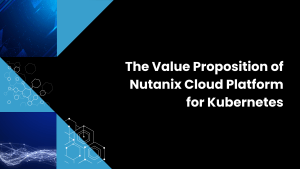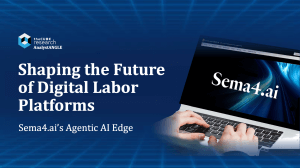Business data is a capital asset. That’s because, in a classical economic framework, data is a factor of production, is not depleted in the process of production, and gains value from human inputs, contributions, and sweat equity.
As a capital asset, data’s value goes far beyond the sunk cost of its physical instantiation in a database or even the cost of restoring if it were to be lost, stolen, or corrupted. Data’s full value resides in the full range of potential business decisions, processes, engagements, and outcomes that it might support. And its value in those derives in great part on the data-driven insights that can be unlocked through analytic tools.
As your data grows bigger, so do the potential insights. However, many of those insights may be just beyond your reach if you try to surface them using simple analytic tools, such as ad-hoc queries, pre-existing reports, and operational dashboards. As Oracle’s Paul Sonderegger states in this excellent recent whitepaper, data capital requires a deep understanding of how to create applications that analyze and use information. In other words, data-driven insights are (in the paper’s parlance) a “produced good” that springs into the world through focused human ingenuity.
Advanced analytics are a “produced good” par excellence. To deepen the value of their data capital, organizations need to invest in data science to produce machine learning (ML), artificial intelligence (AI), and other sophisticated new analytic assets. That, in turn, requires that companies foster a work culture in which data science expertise is widely distributed and productive collaborations among data-savvy knowledge workers are easy to arrange.
In other words, your investment in data capital must dovetail with investments in human capital. As Oracle’s Neil Mendelson stated in this recent #theCube interview, an agile data-driven business culture thrives on flexible collaborations around the building and refinement of analytic applications:
“The business analyst is going to collaborate together with the data wrangler. We’ve got the data, and now the data scientist or the mathematician gets involved. And what you’re beginning to do is look at the data that’s been derived and for the business analysts looking at it it’s more of a visual metaphor and for the data scientist looking at it is more from a quantitative point of view. And you want to spend enough time to understand that you’re now looking at the data and some of your original assumptions about the data and about your business are actually holding true. Because, it’s possible at that point that you find out that your original assumption that you’re working toward, toward changing this outcome needs to actually shift a little bit because what you thought was happening was actually different….Sometimes you have to rejigger and you have to be open to being agile, not to be so fixed on [a] particular outcome….Being able to initially examine the data might shift you a little bit left or a little bit right. You’ve got to be open to that.”
If you’re a data analytics professional, you almost certainly have practical insights for using ML and AI to grow, manage, and monetize your organization’s data capital. Please join Oracle and Wikibon for the #OracleBDCM CrowdChat “Deepening Data Capital Through Cloud-Based Machine Learning and Artificial Intelligence.” on Wednesday, September 13, 10:00-11:00am (PDT)/1:00-2:00pm (EDT) by clicking here, logging in with your Twitter handle, and posting your thoughts in an interactive, moderated Q&A format.

In this Crowdchat, experts, practitioners, and other interested parties will engage in vigorous debate on the steps in the enterprise ML/AI path including the journey to the cloud, discuss the disruptive business outcomes that can be achieved with these technologies, and describe real-world ML/AI success stories in various industries. Oracle’s Sonderegger and Jean-Pierre Dijcks will be featured experts.
Here are the specific topics we’ll discuss in the CrowdChat:
- What is data capital and how can it contribute to enterprise transformation and productivity?
- How can you use ML/AI to unlock the potential of enterprise data capital?
- What are the primary big data applications of ML/AI in business?
- What big data platforms and tools are central to the enterprise ML/AI journey?
- How should organizations incorporate cloud-based ML/AI into their big data strategy?
- What governance, compliance, and cultural issues should you address in your cloud-based big data & ML/AI implementations?
- What is the next big trend in enterprise adoption of big data and ML/AI in the cloud?
I’ll also be sharing my thoughts in the CrowdChat. Can we count on your participation?


